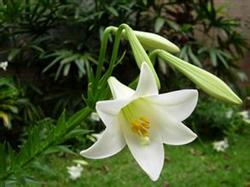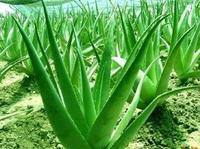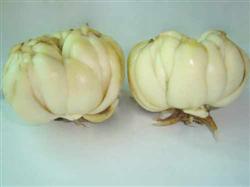Disease control of fresh cut flower lily

First, lily blight 1, symptoms stems, leaves, flowers and scales can be damaged, mainly the tender leaves of flowers. When the leaves were damaged, small water-immersed spots appeared, and then gradually expanded into grayish green. Stem disease, immersion discoloration part up and down expansion, decay, and further developed into stem bending and sagging. When the disease is serious, pedicels and scales can also be damaged. When the weather is wet, rotting parts such as leaves, stems and scales all produce white mildew layers. 2. Control the rotation of ① and non-parasitic plants, remove and burn diseased plants in time during the growing period, and disinfect the soil with ②. For plots with perennial disease, the soil needs to be disinfected before planting and management. Choose 40% formaldehyde (formalin) 30 ml per square meter, spray the seedbed with 60 to 100 times water, then cover the seedbed with plastic film, remove the mulch after 5 to 7 days and wait for 1 to 2 weeks. Or use 75% pentachloronitrobenzene, 7 to 26 grams per square meter, mix well with the soil, and steam disinfect the soil for 30 to 60 minutes. In the early stage of ③, Bordeaux solution is sprayed on stems and leaves, which also has a certain control effect. 2. The main sites of ① symptoms of lily leaf blight are leaves, plant stems, flower buds and budding buds. Light brown, round or oval disease spots are produced on the leaves, and there are often reddish-brown halos around the disease spots. In severe cases, a large disease spot is formed, resulting in early drying up on the leaves, damage to the stems, and easy decay of the diseased parts and break from here. The disease spot on the flower is brown and rotten in the form of adhesion. The young plants often cause growth point necrosis when the air is moist, there is a grayish-brown mildew layer on the lesion of each affected part. The part where the plant decays, sometimes with obvious sclerotia. ② control (1) Lily cultivation and management in greenhouse should pay attention to ventilation and light, the temperature difference between day and night should not be too large, watering should be irrigated from the side of the plant to the ground, not directly sprayed on the plant, nitrogen fertilizer should not be too much. When diseased leaves are found, remove them immediately and destroy them centrally to reduce the source of infection. (2) Pharmaceutical control: during the susceptible season, you can choose to spray 100 Bordeaux solution, or 800x solution of 5% chlorothalonil wettable powder, or 1000 times of 50% carbendazim wettable powder, or 2500 times of 50% benzoate wettable powder, once every 15 days for 3 to 4 times. In addition to the above two lily diseases, flower growers should also pay attention to lily virus disease, which is generally characterized by poor growth of diseased plants and downward curl of leaves. When the virus is found, the flower growers should remove the diseased plant in time and burn it centrally. The virus can be killed by spraying 1000 to 1500 times of 40% dimethoate EC or 1000 times of 50% carbaryl wettable powder. In addition, lilies cannot be mixed with tulips. In addition, once flower farmers find that flowers have diseases, they must consult scientific and technological personnel to find out the disease, and then spray the liquid according to the condition, so as not to spray it indiscriminately, so as to affect the growth and quality of flowers.
- Prev

Insect pests and Control techniques of Aloe Vera
The main pests of aloe are red spiders, aphids, cotton bollworm and shell insects. These pests mainly harm the seedlings or tender leaves of aloe, and the occurrence quantity is small. 1. Red spiders and aphids. It mainly occurs in spring, summer and autumn. (1) physical control. When the number of worms is small, it can be washed with clean water or crushed to death by hand.
- Next

High-yield cultivation techniques of Edible Lily
Lily is a cross-year crop. After planting in the autumn of the first year, it will not be able to break the soil and show seedlings until the following spring, during which it has been bred and grown in the ground for nearly half a year. In order to obtain high yield, the following technical links should be grasped in cultivation: first, the selection of suitable improved varieties of lilies can be divided into edible and medicinal varieties, with a total of more than 10 varieties. Eat.
Related
- Fuxing push coffee new agricultural production and marketing class: lack of small-scale processing plants
- Jujube rice field leisure farm deep ploughing Yilan for five years to create a space for organic food and play
- Nongyu Farm-A trial of organic papaya for brave women with advanced technology
- Four points for attention in the prevention and control of diseases and insect pests of edible fungi
- How to add nutrient solution to Edible Fungi
- Is there any good way to control edible fungus mites?
- Open Inoculation Technology of Edible Fungi
- Is there any clever way to use fertilizer for edible fungus in winter?
- What agents are used to kill the pathogens of edible fungi in the mushroom shed?
- Rapid drying of Edible Fungi

